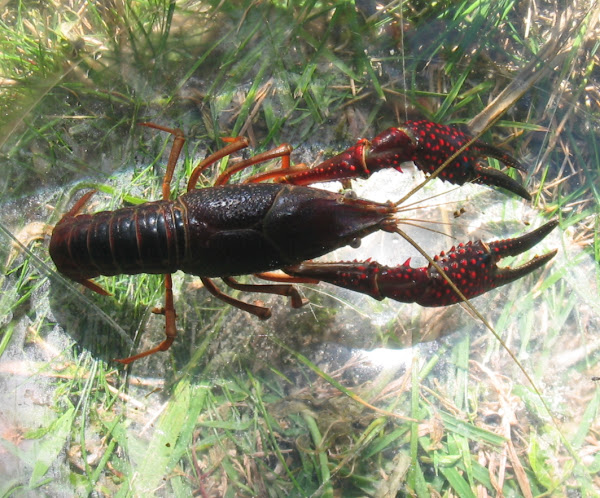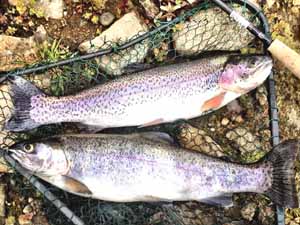The Red Swamp Crayfish is a species of cambarid freshwater crayfish. It is also known as the red swamp crayfish, Louisiana crawfish, Louisiana crayfish or mudbug.
It is native to northern Mexico, and southern and southeastern United States. But it has also been introduced elsewhere (both in North America and other continents), where it is often an invasive pest.
The Red Swamp Crayfish was probably introduced through aquaculture, because it is a popular food throughout the world.
It has also been introduced outside it’s natural range to some countries in Asia, Africa, Europe and elsewhere in the Americas. Read some more information about this crayfish below.
Red Swamp Crayfish Characteristics
The Red Swamp Crayfish is generally dark red in color with long claws and head. It has small or no spines on the sides of it’s carapace just below the head.
These crayfish have rows of bright red bumps on the front and side of the first leg.
Average body length of the mature Red Swamp Crayfish is between 2.2 and 4.7 inches (5.5 to 12 cm).

And they reach average live body weight of around 50 grams in 3 to 5 months. Photo and info from Wikipedia.
Feeding
The Red Swamp Crayfish feed mainly on snails, fish, amphibians and plants.
Breeding
The Red Swamp Crayfish live in a variety of permanent freshwater habitats. They prefer ponds, swamps, marshes and slow moving rivers and streams. But they can also become established in lakes.
They are especially well adapted to areas with large water level fluctuations. They generally mate in autumn and lay eggs in spring to early summer, in their native range.
The females burrow into soft sediment and lay eggs. Depending on the size of the females, the number of eggs can vary. The large female fishes can lay as much as 650 eggs at a time.
Uses
This fish species is used and cultivated mainly for food.
Special Notes
This is a very important species for commercial aquaculture, and it account for a large majority of the crayfish produced in the United States and elsewhere.
In the 18th century, crayfish farming began in Louisiana. But total production of these species has decreased in recent years due to an increase of imports from China.
And China is now the world’s leading producer of crayfish. It has also been introduced in many other places for cultivation, such as Spain.
Red Swamp Crayfish is eaten in the Caribbean, New Zealand, Canada, Thailand, Australia, Africa, China, Europe, Cambodia and the United States.
And about 98 percent of the crayfish harvested in the United States come from Louisiana. However, review full breed profile of this fish species in the table below.
| Name | Red Swamp Crayfish |
| Kingdom | Animalia |
| Phylum | Arthropoda |
| Class | Malacostraca |
| Order | Decapoda |
| Family | Cambaridae |
| Genus | Procambarus |
| Species | P. clarkii |
| Binomial Name | Procambarus clarkii |
| Other Names | Red swamp crawfish, Louisiana crawfish, Louisiana crayfish, mudbug |
| Breed Purpose | Mainly food |
| Weight | Around 50 grams |
| Special Notes | Very important species for commercial aquaculture, China is the leading producer of crayfish, mainly harvested for food |
| Breeding Method | Natural |
| Climate Tolerance | Native climates |
| Body Color | Dark red |
| Rarity | Common |
| Availability | Worldwide |






